Carol writes: Over the past 4-1/2 years on the road, several months of travel have meandered through five states that border the Great Lakes. It has been a fascinating learning experience in the midst of wondrous scenery in a part of the country that wasn’t very familiar to us from the outset. So, as we slowly meandered toward an October rendezvous on the Atlantic Ocean, it seemed logical to swing through upstate New York at the eastern end of the Great Lakes, where we wanted to check out a “pretty neat waterfall.”
All of the Great Lakes are connected in some manner—natural connections, rivers, locks and canals—as the water from Lake Superior begins an inexorable flow downhill to the Atlantic Ocean. Niagara Falls is situated on the Niagara River between Lake Erie and Lake Ontario, near the eastern terminus of that great waterway. An elevation profile of the Great Lakes illustrates why geologic forces created such a grand tableau on the Niagara River. A couple of hundred feet difference in elevation between the surface of Lake Erie and Lake Ontario has made all the difference in the world…
The Great Lakes were gouged out by a continental ice sheet 10,000 years ago. As the glacier retreated, five massive, deep depressions filled with river run-off, rainwater and snowmelt to form the Great Lakes of Superior, Michigan, Huron, Erie, and Ontario.
In eastern New York, we camped for a week on Grand Island, an actual island between two branches of the Niagara River. Niagara Falls was located a short car ride away in Niagara Falls State Park, the first state park in America, which was created in the 1860s by a small group of budding environmentalists led by landscape architect Frederick Law Olmstead. This group of far-sighted citizens helped prevent an onslaught of commercial exploitation around the falls. As a result, our first glimpse of Horseshoe Falls was a gem—one of the world’s most astonishing natural wonders!
At first, it was a little nerve-wracking to walk so close to such a powerful green glasslike conveyor belt of churning water just seconds away from the brink of the falls.
The sunny day was favorable for catching rainbows hovering over a Maid of the Mist excursion boat navigating the brilliant turquoise water.
A friendly tourist was kind enough to offer to take our souvenir selfie…
Looking downstream, the architecturally pleasing Rainbow Bridge spanned the gorge with a lovely link to the Canadian side.
Close-ups of raincoat-clad tourists on the Maid of the Mist,
and the very heavily packed Canadian version of this excursion, showed that there was no shortage of tourists anxious to experience a close encounter with the thundering falls.
A walk around to the other side of the American Falls unfolded an expanded view of the geologic grandeur of the setting.
It was quite evident that Canada had no reservations about “enhancing” their side of the falls with high-rise hotels, condos and casinos, peppered with somewhat tacky commercialism.
The tourism atmosphere leading to the fenced walk along the Canadian side was jarring! It was a clashing and noisy carnival scene that resembled a northern version of Gatlinburg—complete with a ferris wheel,
a tilted building,
and mirror mazes.
What were they thinking?…
After leaving the Canadian carnie scene behind, the view encompassing all three falls along the Niagara River was most superb!
The social scene was truly multicultural. We detected several different languages spoken by the crowd. Many of the women were in Middle Eastern or Indian gowns.
The gardens were meticulously groomed. The statue dedicated to the British royal family was of a British king—George VI, father of the present queen.
Raincoats of every color were worn by all nationalities.
A ride up the funicular to the bluff on the Canadian side was worth it for the view alone…
Niagara Falls is a great family vacation destination, but there is more to see than just the falls. Old Fort Niagara is just 20 minutes away downstream on a peninsula where the Niagara River empties into Lake Ontario.
History goes back a long way here! The first military post was established at the fort in 1679. The fort’s strategic location compelled it to play a part in the French and Indian War and the American Revolution, but it is best known for its role in the War of 1812.
French Castle, the oldest building on the fort (1726), was designed to look like a house rather than a fortification in order to avoid giving offense to local Natives.
One of the oldest surviving United States flags was on display at the fort. This flag was captured by the British during the War of 1812.
It was interesting to soak up some of the history that played out here among some of the most authentic examples of 18th century architecture on the continent.
During our recent visit to Fallingwater, widely considered Frank Lloyd Wright’s masterpiece, we were told by one of the docents that she felt Wright’s Martin House in Buffalo was even better. Hmmm, that had our attention…
Turns out, we agreed. Martin House was built by a young Frank Lloyd Wright at the turn of the 20th century for progressive businessman Darwin, D. Martin and his family. We felt Martin House was, as Frank Lloyd Wright said best, “a well-nigh perfect composition.”
Incredibly, this home was brought back from the brink of demolition and was meticulously restored to Wright’s original vision. Inside and out, it was a Wright classic.
Not every one of the sights we have chosen to visit are considered top-notch tourist destinations, and so it was in nearby Buffalo. It has been said that American architecture and Buffalo grew up together. Buffalo boasts having one of the finest inventories of great architecture of any city in America; however, we found it difficult to appreciate that fact in a downtown that wasn’t particularly walkable or attractive at street level.
We grabbed a few shots of notable buildings from the car window as we quickly swung through downtown, like these of the Buffalo skyline and the Art Deco dandy City Hall.
Of more interest to us was the Buffalo waterfront with its haunting concrete monoliths that encapsulated the manufacturing and industrial history of a bygone era.
Heavy manufacturing departed Buffalo 50 years ago. At Riverworks, the city has celebrated its industrial past and has repurposed grain silos and concrete ruins into venues of recreation, entertainment, and culture.
Whew! That was a stimulating week in the Niagara Falls area. I feel that no travel blog about Niagara Falls would be complete without at least a mention of some of the crazy human tricks that have been inspired by this world-class waterfall.
In 2012, Nik Wallenda successfully navigated a tightrope that spanned 1800 feet across the brim of Horseshoe Falls. Crazy… even with a tether.
As a money-generating stunt in 1901, 63-year-old Michigan schoolteacher Annie Edson Taylor became the first person to go over the falls in a barrel, but not until after testing her custom-made barrel by first sending a cat in her barrel over the falls! When Annie made her own plunge two days later, she survived unharmed with little more than a few cuts. All I can say is: “That’s a terrible way to treat a cat!”
Carol Galus
Photo-Blogger







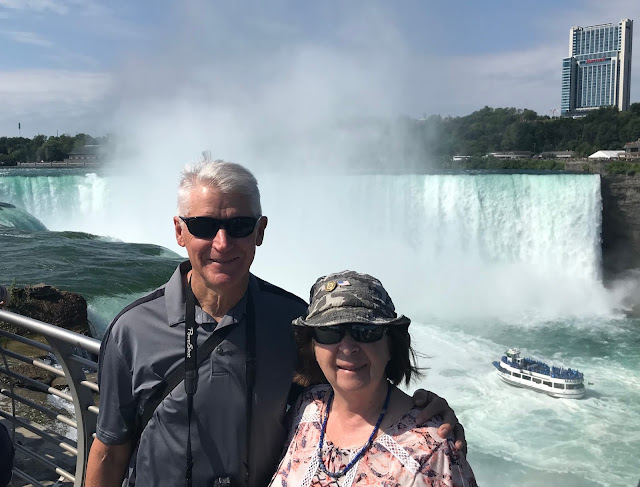








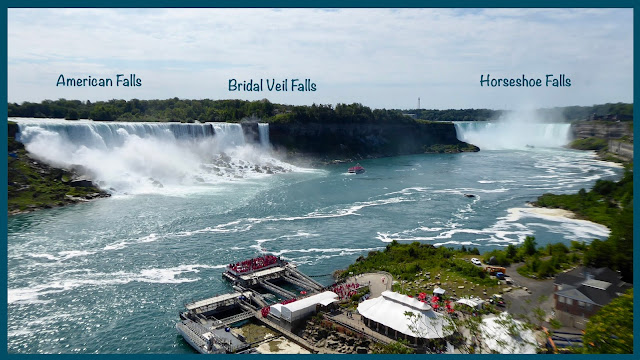



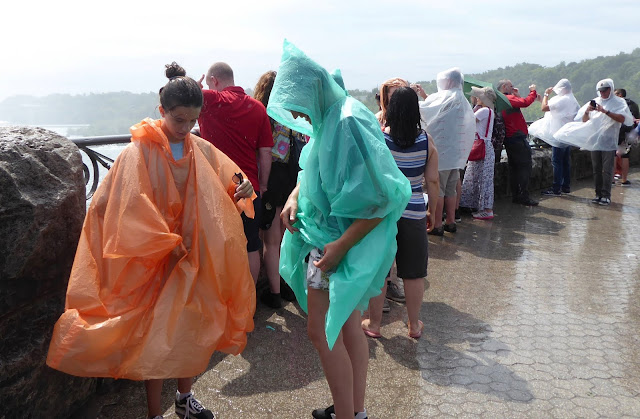






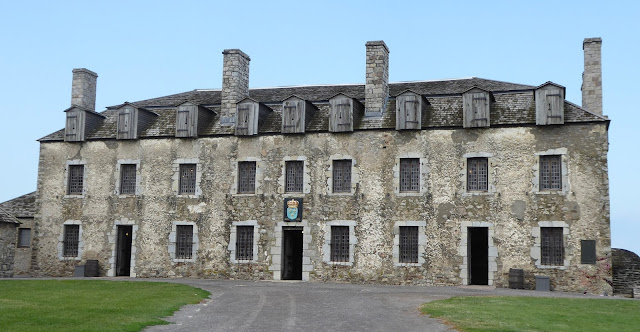





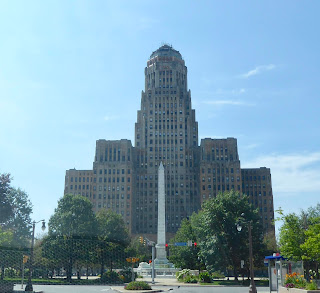



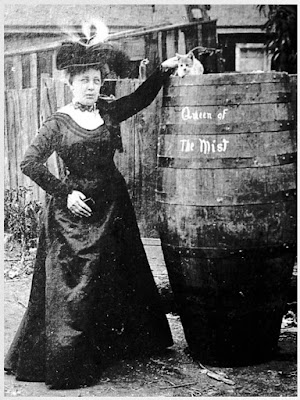
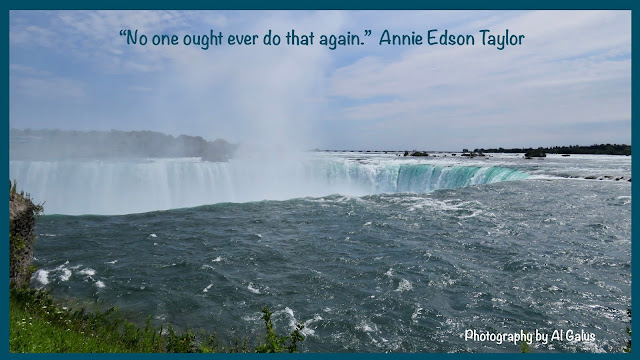
No comments:
Post a Comment